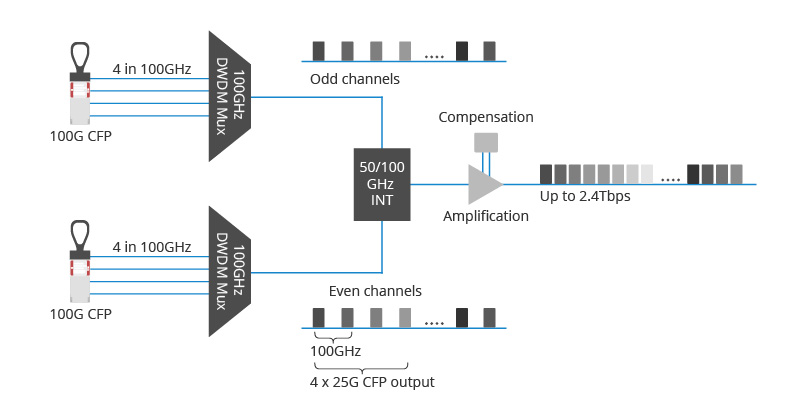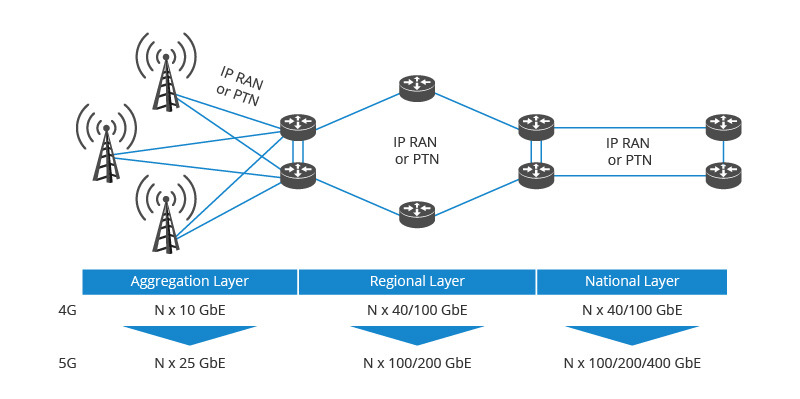How to set up a 100G metropolitan area network?
With the popularization of the Internet, the data traffic of the metropolitan area network has increased, and the pressure on its network bandwidth has increased. The original 10G and 40G wavelength division equipment capacity has gradually been unable to meet the high bandwidth requirements. The use of 100G WDM equipment can carry more traffic, which is very suitable for application in large metropolitan area networks.
The advantages of 100G metropolitan area network are obvious
In traditional 10G and 40G metropolitan area networks, operators choose fixed passive filter technology or ROADM technology to deploy optical networks. Passive filters provide low-cost, easy-to-deploy point-to-point connections for metropolitan area networks, but lack flexibility and scalability; ROADM-based metropolitan area network solutions are easy to operate and flexible, but have high installation costs .
Unlike 10G and 40G metropolitan area networks, 100G metropolitan area networks use a newly developed coherent packet optical technology that is as flexible and scalable as ROADM-based networks, but without the expensive wavelength selective switches (WSS) and optical filter. With the help of coherent technology, 100G metropolitan area network can support not only point-to-point transmission, but also point-to-multipoint transmission, making the network flexible and future-proof. In addition, 100G metropolitan area network has the following advantages:
1. Larger capacity, the transmission rate of a single fiber is up to 100G to meet the needs of larger bandwidth;
2. Cost advantage, advanced technological innovation can help the network continue to reduce costs;
3. Higher competitiveness and higher scalability help network providers to improve their competitiveness;
How to establish 100G metropolitan area network?
The network architecture of the metropolitan area network is usually divided into three layers: the core layer, the aggregation layer and the access layer. Different transmission technologies are used in the aggregation layer and the access layer, namely IP RAN and PTN, IP address and routing. The former Used in mobile networks, the latter used in broadband networks.

Optical amplifiers are used to overcome fiber attenuation due to uneven distribution of optical power and other factors, and dispersion compensation modules are widely used to overcome interference between signals.


